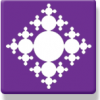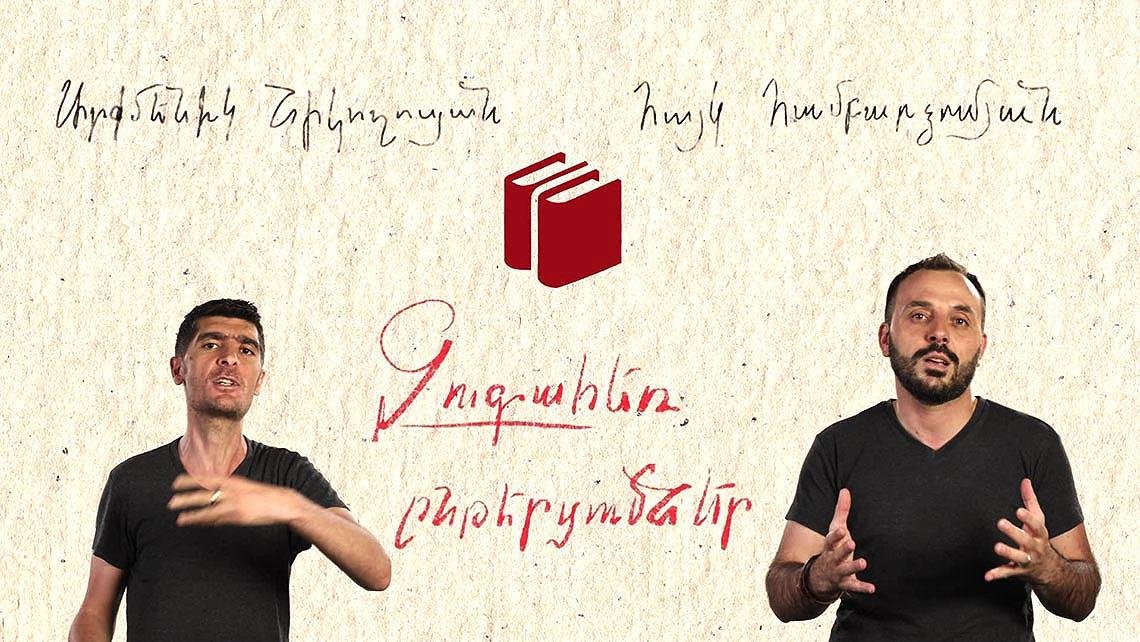
Literary critics Hayk Hambardzumyan and Arkmenik Nikoghosyan debate on the most famous, popular, and at the same time controversial works of Armenian classical and world literature. Each discussion is dedicated to one literary work, the debate of the literary critics presents the possibilities of its traditional and new perception.
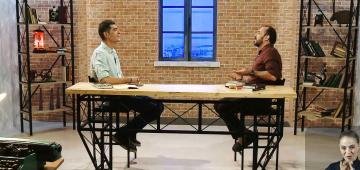 |
Birth and Farewell according to Hovhannes GrigoryanThe humor and self-irony characteristic of his poetry are always mixed with tragedy. His poems are loved by different generations of readers. On the occasion of Hovhannes Grigoryan's 80th birthday, his birthday and farewell poems are discussed in parallel by Hayk Hambardzumyan and Arkmenik Nikoghosyan. |
 |
The messages of the epic "Sasna Tsrer"What messages does the most significant work of Armenian folklore, “The Sasna Tsrer,” convey? How does the perception of the epic change over time? What did the people who created it encode in the epic, and how does it encode us today? Hayk Hambardzumyan and Arkmenik Nikoghosyan debate these topics on the “Parallel Readings” program. |
 |
The Transient and the Permanent in Gabriel Sundukyan's DramaturgyThe themes addressed in Gabriel Sundukyan’s plays, although they may seem outdated today, continue to be one of the most staged Armenian playwrights. On the occasion of the 200th anniversary of Gabriel Sundukyan’s birth, literary critics Hayk Hambardzumyan and Arkmenik Nikoghosyan discuss the peculiarities of G. Sundukyan’s dramaturgy in the program “Parallel Readings.” |
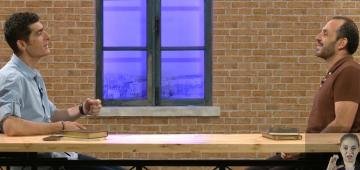 |
Literature that brings heroes home, part 1Homecoming is one of the key themes of Armenian and world literature. In literary and folklore works, the motives of heroes returning home and their perceptions of home are different. The motifs of homecoming in Armenian medieval literature, folklore, and also in new literature were discussed in the program “Parallel Readings” by literary critics Hayk Hambardzumyan and Arkmenik Nikoghosyan. |
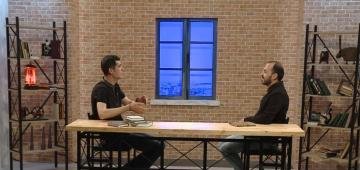 |
French literature in ArmenianArmenian translations of French literature are a unique segment in the Armenian translation field. When and how did translations of French literature begin, what was their process, what and why is being translated from French today? Literary scholars Hayk Hambardzumyan and Arkmenik Nikoghosyan discuss these questions in the “Parallel Readings” program. |
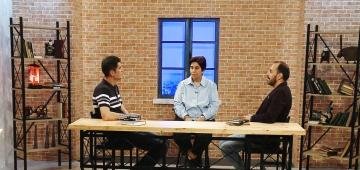 |
Exile literatureSince 2006, June 14 has been celebrated in Armenia as the Day of Remembrance of the Oppressed. According to official data, 42,000 people were repressed in Armenia, a significant part of whom were shot. The artistic, memoir, and publicistic references to that terrible reality later received the name of exile literature. Literary critics Hayk Hambardzumyan, Arkmenik Nikoghosyan, and literary critic Siranush Dvoyan talk about the artistic and psychological peculiarities of these works in the “Parallel Readings” program. |
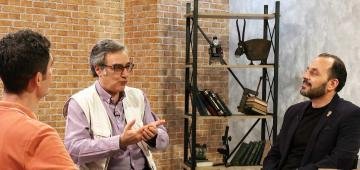 |
Hrant Matevosyan: I am the master of my time, part 2Starting from Hrant Matevosyan's first works, the elimination of the perception of the owner of his country and land, as well as time, is key from within the human being, from the Armenian person. How do Matevosyan's heroes respond to this situation, what solutions does the author offer? The "Parallel Readings" program discusses literary critics Hayk Hambardzumyan, Arkmenik Nikoghosyan, and writer and publicist Gevorg Ter-Gabrielyan. |
 |
Hrant Matevosyan: I am the master of my time, part 1In many of Hrant Matevosyan's works, one can encounter the idea of owning the land, the country, and time. Who is the owner according to the prose writer, what does it mean to be the owner of time, what is the writer's responsibility or obligation towards his time? The "Parallel Readings" program features discussions with literary critics Hayk Hambardzumyan, Arkmenik Nikoghosyan, and writer and publicist Gevorg Ter-Gabrielyan. |
 |
Khachik Dashtents' novel "The Call of the Ranch Dancers"The main characters of Khachik Dashtents' novel "The Call of the Ranch Dancers" are leaders of the national liberation movement: Zoravar Andranik, Gevorg Chaush, Aghbyur Serob, Makhluto and others, and the story is woven around the heroic and unbreakable spirit of the people. The 115th anniversary of Khachik Dashtents' birth is approaching, and literary critics Hayk Hambardzumyan and Arkmenik Nikoghosyan discuss the author's famous novel on the "Parallel Readings" program. |
 |
World dramaturgy in Armenian: who is the addressee?In recent years, there has been great activity in translating world drama into Armenian. Moreover, many of the playwrights are being performed in Armenian for the first time. At the same time, Armenian theaters do not seem to be using these translations. Why is world drama translated, for the reader or for the theater? These questions are discussed in the program “Parallel Readings” by literary critics Hayk Hambardzumyan, Arkmenik Nikoghosyan, and translator, film critic Zaven Boyajyan. |
 |
Around one story: Aghasi Ayvazyan, "Kirakos"Aghasi Ayvazyan's story "Kirakos", which tells about tragedy and humanity, conscience and hope, although it is one of the author's early works, summarizes the main ideas of his work. Who is Kirakos, what does he have to do with conscience, what are the messages of the story? Literary critics Hayk Hambardzumyan and Arkmenik Nikoghosyan discuss these questions in the program "Parallel Readings". |
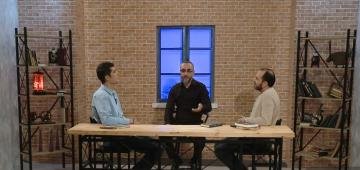 |
The psychological portrait of little MherLittle Mher is the most mysterious character in the national epic "Sasna Tsrer", allowing for the most diverse readings. In addition to mythological, artistic, and philosophical interpretations, the psychological analysis of the character of Little Mher is noteworthy. In the program "Parallel Readings", literary critics Hayk Hambardzumyan, Arkmenik Nikoghosyan, and psychologist Aram Khachatryan discuss the psychological peculiarities of the perception of the formation of this hero. |
